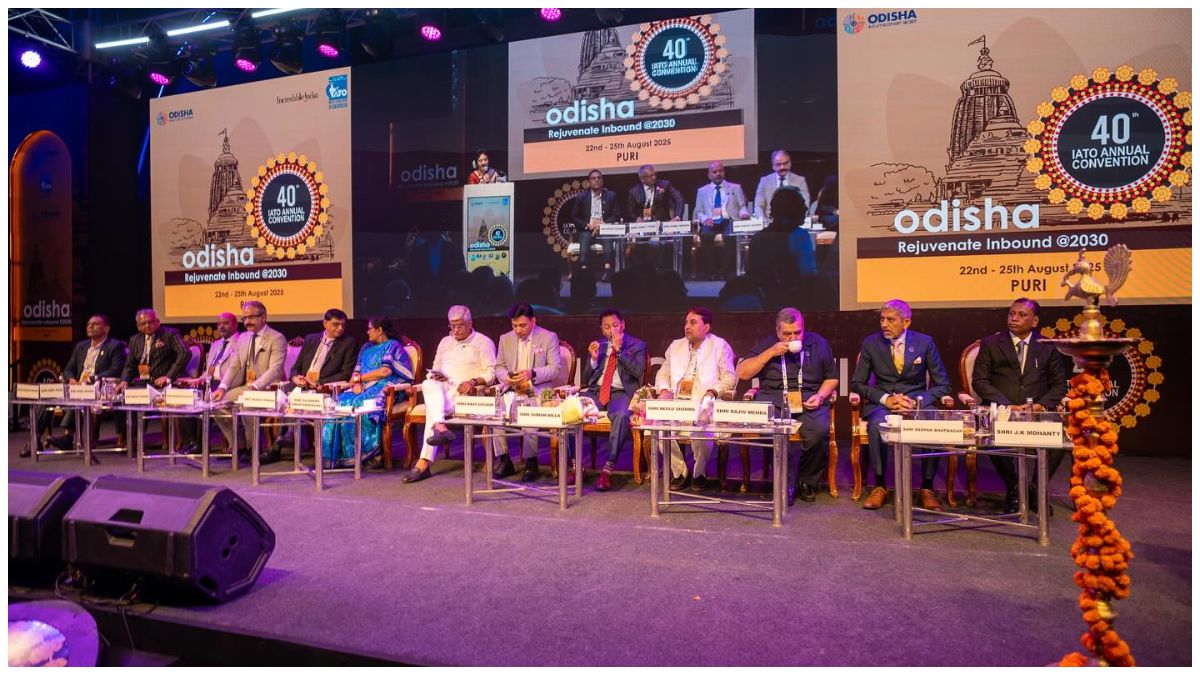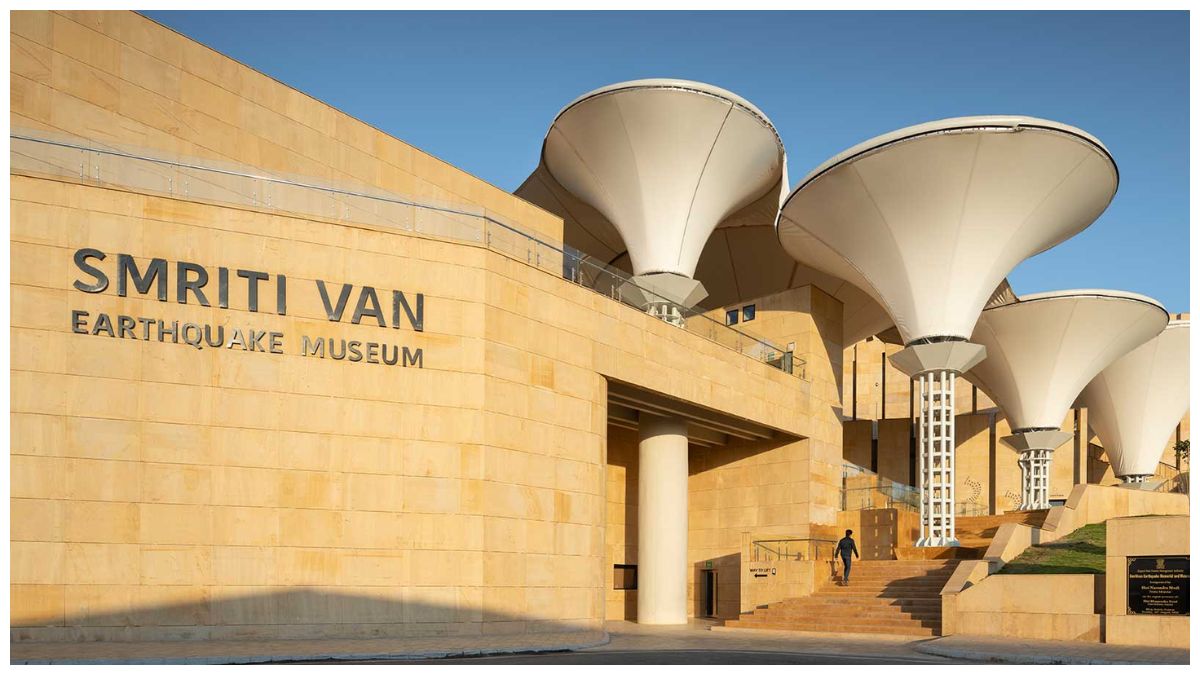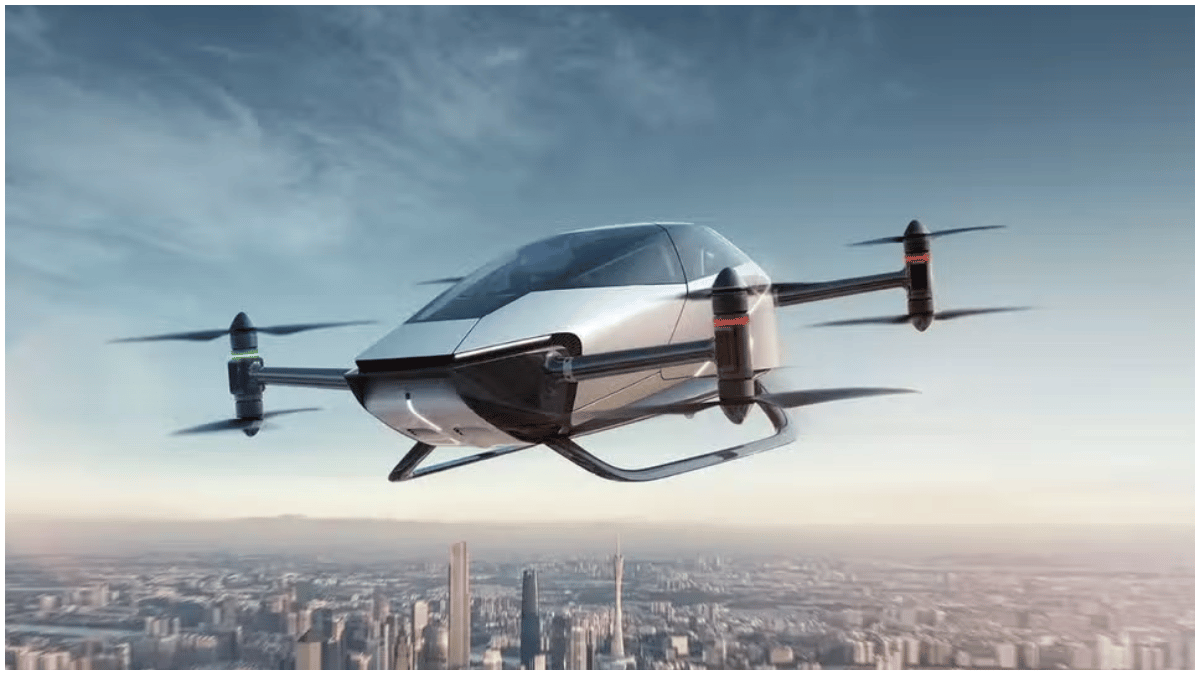40th IATO Annual Convention Concludes in Puri
The 40th IATO Annual Convention of the Indian Association of Tour Operators (IATO) came to a close in Puri on August 25, with a strong focus on strategies to accelerate inbound tourism. The three-day event, held under the theme Rejuvenate Inbound @2030, brought together over 1,100 delegates including industry leaders, government officials, and tourism stakeholders.
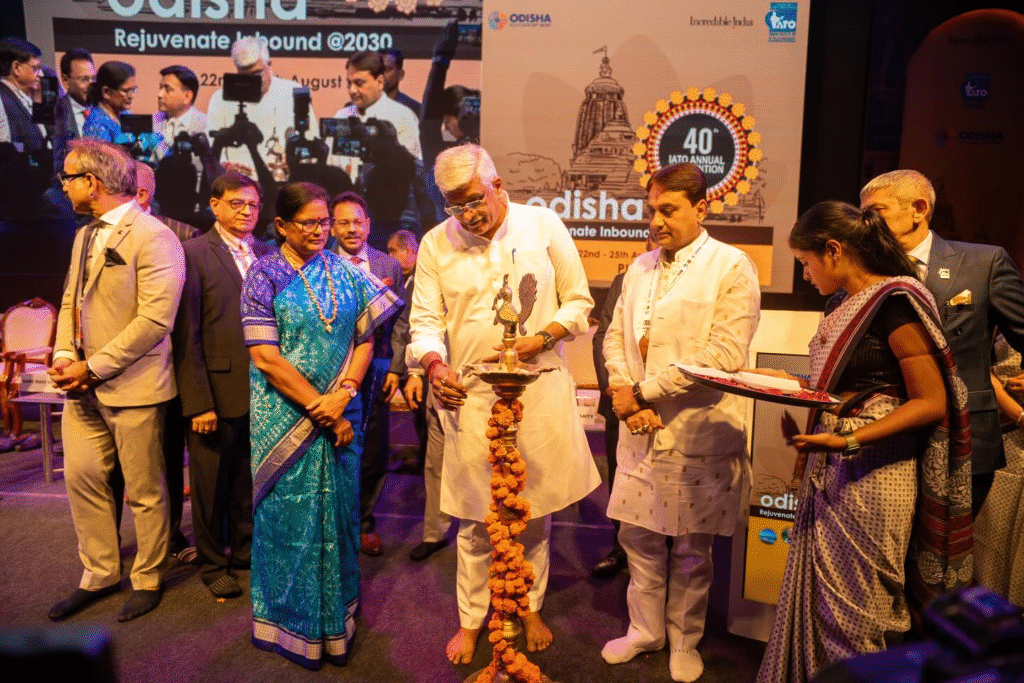
The inaugural session featured addresses by IATO President Ravi Gosain, Sanjay Razdan, and Union Minister of Culture and Tourism Gajendra Singh Shekhawat, Chhattisgarh Tourism Chairperson Mr. Nilu Sharma along with senior officials from the Odisha government. The release of the IATO Manual 2025 and the IATO Hall of Fame Awards 2025 marked key highlights of the opening day.
Ravi Gosain expressed optimism about the convention’s impact on Odisha’s tourism prospects. We hope that hosting 40th IATO Annual convention in the holy city of Puri will give Odisha wider visibility in both domestic and international markets, he said.
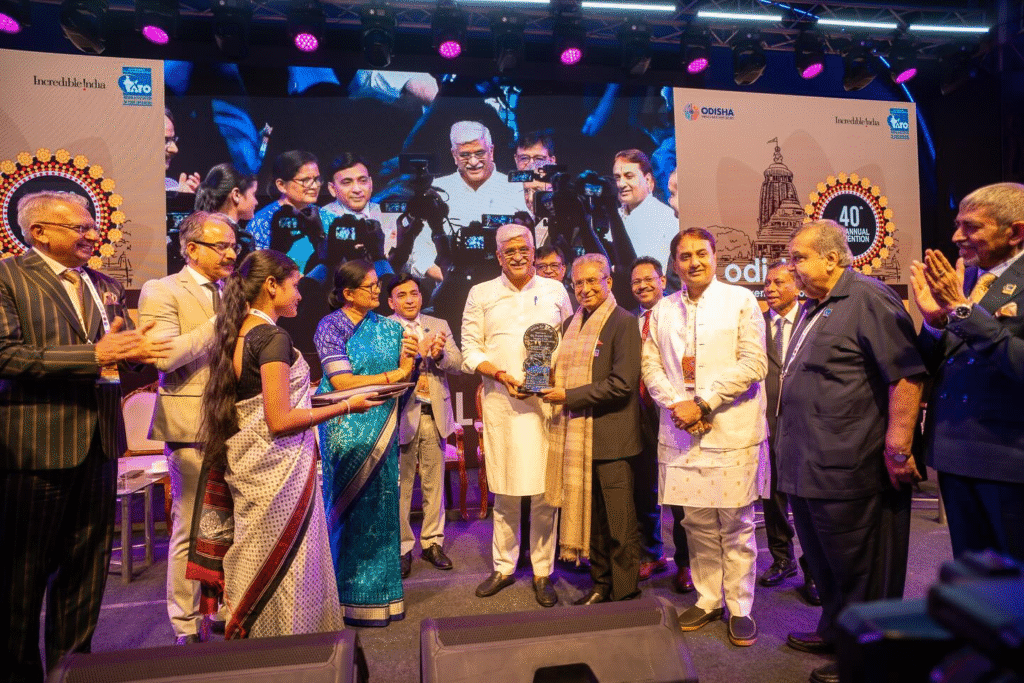
Deliberations during the convention centred on bridging information gaps between the government and industry, adopting new technologies, and preparing the sector to achieve realistic growth targets by 2030. One of the realistic figures for the Government of India is to achieve certain targets by 2047. But we know that 2047 is some distance away. So, the time of 2030 has been selected by IATO, which is Rejuvenate Indian Inbound Tourism by 2030. It is a realistic figure to upskill the entire IATO fraternity with the latest technologies and to understand how we are going to reach a realistic figure by 2030. Now, the important thing is also to bridge the information gap between the government and the fraternity in such a way that the government has a realistic understanding of the real problems of IATO, not only as members, but as a fraternity. And the skill sessions are designed in such a way that everybody is ready to try and achieve their goals of a realistic figure by 2030. At the convention, we focussed on building up the momentum of the international inbound tourism segment in such a way that we achieve a realistic target, said Harish Mathur, IATO Executive Committee Member.
The concluding day featured the IATO Run for Responsible Tourism to promote sustainable travel, followed by a business session on Innovative Products & Immersive Journeys. Moderated by Shoba Rudra of RARE India, the session highlighted the importance of preserving authenticity at destinations through local community involvement, expert research, and quality service.
Delegates praised the convention for combining informative discussions with networking opportunities. The sessions on data-driven growth and sustainability have been especially valuable, said Navneeta Singh Deo, co-owner of Gajlaxmi Palace, a heritage homestay in Odisha.
With Odisha as the host, the convention not only underlined the state’s tourism potential but also reaffirmed IATO’s commitment to strengthening India’s position in the global inbound tourism market.
Gujarat’s Smritivan Earthquake Memorial Museum Nominated for UNESCO’s 2024 Prix Versailles Award
In a recent announcement, Gujarat’s Smritivan Earthquake Memorial Museum has been shortlisted for UNESCO’s prestigious Prix Versailles Award 2024. This museum, dedicated to the memory of the tragic 2001 earthquake in Bhuj, serves as a poignant symbol of human resilience and hope.
The Smritivan Earthquake Memorial Museum stands among seven remarkable museums nominated for the esteemed Prix Versailles Award. Since its inception in 2015, this annual UNESCO competition has highlighted outstanding modern architectural projects from around the world.
Smritivan – A Tribute to Resilience
Spanning 470 acres, Smritivan pays tribute to those affected by the devastating 2001 earthquake, which claimed approximately 13,000 lives. The museum’s seven thematic blocks—Rebirth, Rediscover, Restore, Rebuild, Rethink, Relive, and Renew—illustrate the journey from tragedy to recovery, each symbolizing a step in the process of healing and rebuilding.
Smritivan – Architectural Brilliance and Cultural Significance
The nomination of Smritivan highlights its architectural excellence and cultural importance, positioning it as a global model for disaster memorials. Its innovative design seamlessly integrates with the natural surroundings, promotes sustainable practices, and celebrates cultural heritage. These elements align perfectly with the award’s criteria, which emphasize the economic, cultural, and ecological dimensions of architecture.
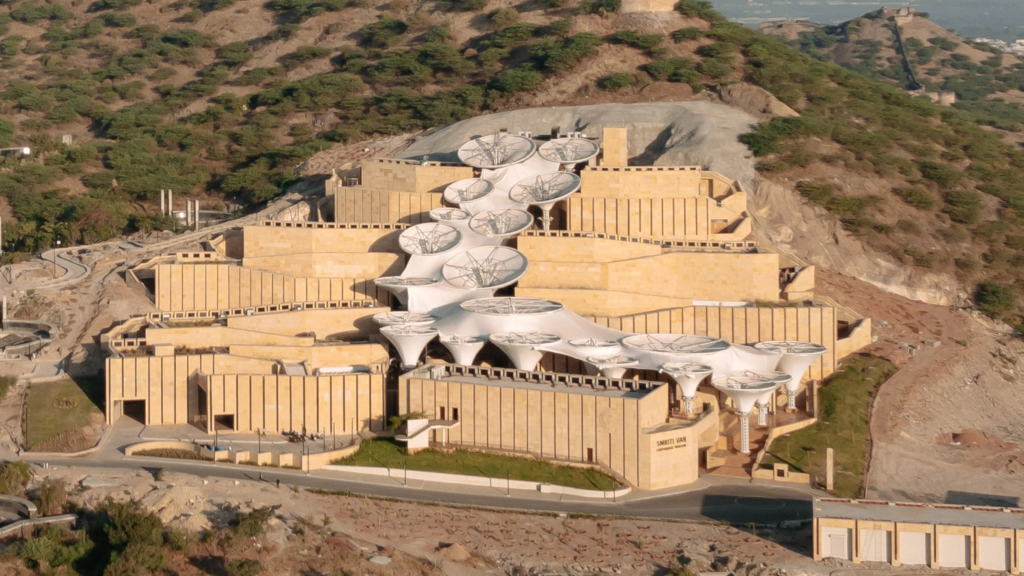
The Prix Versailles Award
The Prix Versailles Awards, established to honor exceptional architecture in terms of interiors, exteriors, and overall design, will announce the winners at UNESCO headquarters in late November 2024. The awards celebrate architectural projects that enhance societal well-being and environmental stewardship, recognizing structures that contribute positively to their communities and the environment.
Remembering the 2001 Gujarat Earthquake
On January 26, 2001, a catastrophic earthquake struck Gujarat, with its epicenter near Bhuj. The earthquake, registering a magnitude of 7.7, resulted in approximately 13,000 deaths and left over 167,000 injured. It caused extensive damage to homes, infrastructure, and livelihoods across the region. The aftermath saw a massive humanitarian response, with national and international aid supporting rescue and relief efforts. This disaster prompted significant reconstruction initiatives and led to improved disaster preparedness and recovery strategies in the affected areas.
Dubai Launches Air Taxis: Citywide Travel in 10 Minutes!
Dubai has unveiled an innovative air taxi service, marking a groundbreaking advancement in urban transportation. Spearheaded by the Roads and Transport Authority (RTA), this pioneering initiative is poised to redefine travel within the city. Travelers can avail themselves of this aerial mode of transportation for a minimum fare of 350 dirhams per person.
Set to commence operations by the year’s end, the air taxi service promises swift and secure mobility, linking various destinations across the Emirate in just 10 minutes.
Operated by a leading US-based aviation company, these air taxis have been meticulously crafted to provide passengers with an exhilarating aerial journey while prioritizing safety and comfort. Offering panoramic vistas of Dubai’s iconic skyline, passengers can embark on a seamless voyage devoid of the constraints posed by heavy city traffic.

In contrast to traditional modes of transportation, which often entail lengthy commutes, the introduction of air taxis is poised to reshape this landscape. Authorities anticipate that these futuristic aerial vehicles will slash travel times between key locations by an impressive 70%. For instance, a journey from Dubai International Airport to Palm Jumeirah, typically taking 45 minutes to an hour by road, can now be completed in just 10 to 12 minutes aboard an air taxi.
Each air taxi accommodates up to four passengers alongside a skilled pilot, ensuring both convenience and efficiency. Moreover, the inclusion of baggage compartments further enhances the passenger experience, catering to diverse travel needs.
Safety remains paramount in the design and operation of these air taxis, which operate at altitudes ranging from 500 to 1000 meters, varying based on the journey’s distance. Pilots undergo rigorous training spanning 6 to 8 weeks to adeptly navigate the air taxis, ensuring a smooth and secure journey for passengers. Booking a ride is streamlined through a dedicated mobile application developed by Joby Aviation, seamlessly integrated with popular ride-sharing platforms like Uber.
Innovative charging infrastructure enables swift turnaround times for air taxis, capable of recharging from zero to 100% in under ten minutes. Upon landing at designated vertiports, ground staff promptly connect the air taxi to charging points, ensuring minimal downtime before the next departure.
Notably, these air taxis amalgamate helicopter and airplane technology, blending the vertical take-off capabilities of helicopters with the comfortable flying experience of airplanes. This innovative approach underscores Dubai’s commitment to pioneering sustainable and futuristic transportation solutions, setting a new benchmark for urban mobility on a global scale.

